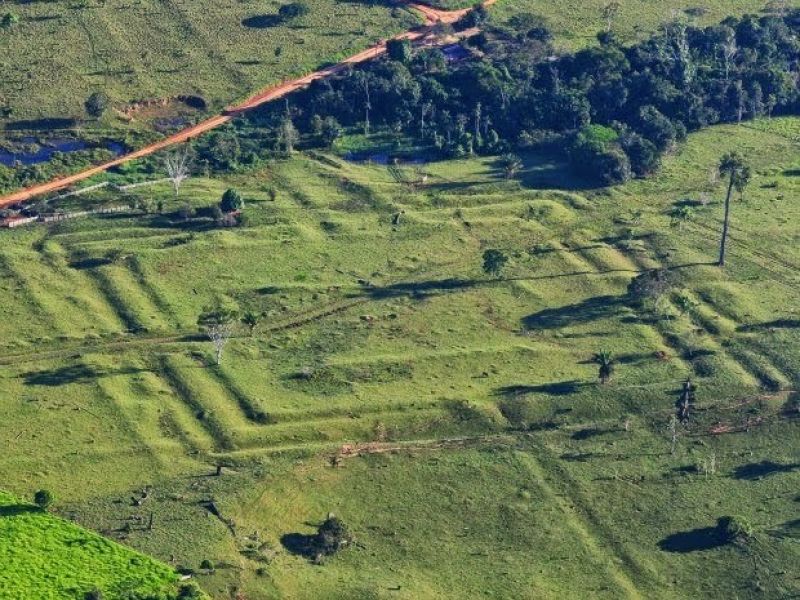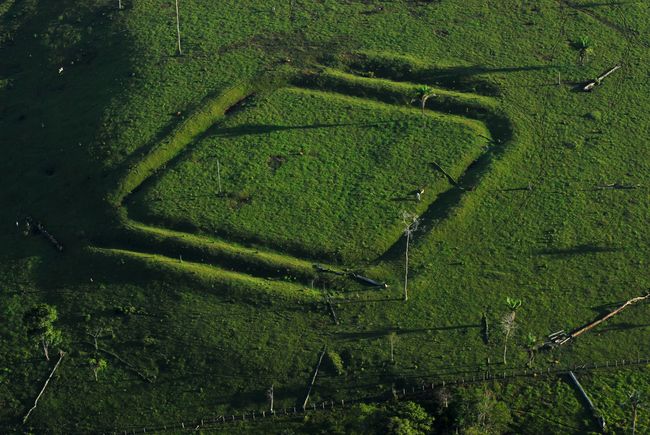Latin America
Related: About this forumThe millenial pre-colonial cultural influence is evident in the Amazon forest
Date:
June 26, 2020
Source:
University of Helsinki
Before the arrival of European colonizers, the Amazonian Indigenous peoples cultivated their food -- cassava, corn, pineapple, peppers and squash, among other things. The food of the ancient civilizations of the Amazon also largely consisted of the fruits of palm and Brazilian nut trees. The protection and management of trees across generations have affected the diversity of the rainforest right up until the present time.
More than ten years ago, large geometric earthworks found in the southwestern parts of the Amazon, called geoglyphs, were reported in the global scientific news. A pre-colonial civilization unknown to scholars that built geometric ceremonial centers and sophisticated road systems. This civilization flourished in the rainforest area 2,000 years ago. The discovery radically altered the prevailing notion of the pristine Amazon rainforest. The research of an interdisciplinary Finnish-Brazilian team continues in the region with the support of the Academy of Finland. Recent findings show that large ancient construction projects not only shaped the landscape, but civilization has also impacted the diverse construction of rainforest.
The research team's latest article "Domestication in Motion" has been published in the journal Environmental Archeology last week. The article shows that in addition to the cultivation of manioc, maize and squash, the protection, care and planting of several trees were important for the food supply of the region's Indigenous peoples, says research director Professor Martti Pärssinen. In particular, Brazilian nut and palm trees with protein-rich fruits are common in samples from geoglyphic sites. They show the pre-colonial diet of the geoglyphic ceremonial sites.
The article also describes how tree domestication was not a linear process in Amazon conditions, as wild forms of plants could also be protected. During the archaeological excavations wild and domesticated forms of peach palm fruit were found, among other plants. On the other hand, especially Brazilian nut trees as well as many palm trees, which are vital for both their fruits and palm kernels, were domesticated in the rainforest area for human consumption. Their fruits are clearly larger than they were 2,000 years ago.
More:
https://www.sciencedaily.com/releases/2020/06/200626114805.htm
Also posted in Anthropology:
https://www.democraticunderground.com/12295762
Judi Lynn
(160,515 posts)Date:
June 26, 2020
Source:
University of Helsinki
Before the arrival of European colonizers, the Amazonian Indigenous peoples cultivated their food -- cassava, corn, pineapple, peppers and squash, among other things. The food of the ancient civilizations of the Amazon also largely consisted of the fruits of palm and Brazilian nut trees. The protection and management of trees across generations have affected the diversity of the rainforest right up until the present time.
More than ten years ago, large geometric earthworks found in the southwestern parts of the Amazon, called geoglyphs, were reported in the global scientific news. A pre-colonial civilization unknown to scholars that built geometric ceremonial centers and sophisticated road systems. This civilization flourished in the rainforest area 2,000 years ago. The discovery radically altered the prevailing notion of the pristine Amazon rainforest. The research of an interdisciplinary Finnish-Brazilian team continues in the region with the support of the Academy of Finland. Recent findings show that large ancient construction projects not only shaped the landscape, but civilization has also impacted the diverse construction of rainforest.
The research team's latest article "Domestication in Motion" has been published in the journal Environmental Archeology last week. The article shows that in addition to the cultivation of manioc, maize and squash, the protection, care and planting of several trees were important for the food supply of the region's Indigenous peoples, says research director Professor Martti Pärssinen. In particular, Brazilian nut and palm trees with protein-rich fruits are common in samples from geoglyphic sites. They show the pre-colonial diet of the geoglyphic ceremonial sites.
The article also describes how tree domestication was not a linear process in Amazon conditions, as wild forms of plants could also be protected. During the archaeological excavations wild and domesticated forms of peach palm fruit were found, among other plants. On the other hand, especially Brazilian nut trees as well as many palm trees, which are vital for both their fruits and palm kernels, were domesticated in the rainforest area for human consumption. Their fruits are clearly larger than they were 2,000 years ago.
More:
https://www.sciencedaily.com/releases/2020/06/200626114805.htm
Examples of Geoglyphs of Acre:





Mysterious Amazonian Geoglyphs Were Built in Already-Altered Forests
By Stephanie Pappas February 06, 2017
Enormous geometrical earthworks found in the Amazon rainforest were built after humans had already begun altering the forest ecology, but the purpose of these huge ditches remains mysterious, according to new research.
The geoglyphs — trenches as big as 36 feet (11 meters) wide and 13 feet (4 m) deep — were dug at various times between the first and 15th centuries. The geoglyphs were discovered in the 1980s, when deforestation for cattle ranching and other agricultural purposes exposed the earthworks, said Jenny Watling, an archaeologist at the University of São Paulo in Brazil, who led the research while she was a doctoral candidate at the University of Exeter in the United Kingdom. The question, Watling told Live Science, was how the landscape looked when the geoglyphs were built.
"There's been a very big debate circling for decades now about how pristine or man-made the Amazonian forests are," Watling said. The new study suggests that humans have been altering these forests for about 4,000 years. [See Aerial Photos of the Amazon Earthworks]
An altered Amazon
Watling and her colleagues dug soil samples from holes 5 feet (1.5 m) deep at two geoglyph sites, called Jaco Sá and Fazenda Colorada, in the state of Acre in far western Brazil. They analyzed these soils for charcoal, which indicates burning activity, as well as for stable carbon isotopes, molecular variations of carbon that can reveal whether the plants that used to grow there were grassland or forest species. Finally, the researchers examined the samples for phytoliths, microscopic plant remains that can help scientists identify specific ancient species.
More:
https://www.livescience.com/57775-humans-altered-amazon-rainforests-geoglyphs.html
Potentially interesting book:
